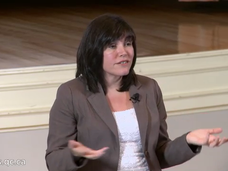
Depression is a mood disorder that affects a person's thoughts, emotions, behavior and physical functioning. It is considered to be a disorder when profound feelings of sadness, emptiness, uselessness etc. last for many days and significantly impair the life of the affected person. It is now known that major depression, which often persists throughout life, may begin in youth.
Youth Depression and Suicidal Behaviors
Adolescence is often a difficult stage in life. Some youth have more difficulty than others in feeling at ease with themselves. They may find little pleasure in life, have difficulty with social interaction, and face problems at school or work.
They may become depressed and may even try to end their life—an act that devastates their family and others close to them. Understanding the factors at play, and how they interact, is crucial to helping young people enjoy the bright future they deserve.
Symptoms
Common symptoms in youth include sadness, loss of interest in daily activities, loss of appetite, sleep problems such as nightmares, concentration and memory problems, sudden social isolation, sudden aggressive behavior, or suicidal tendencies.
Who is affected?
Rates of clinical depression are low in childhood and early adolescence, but rise dramatically by late adolescence (approximately 17%).
Adolescent girls show higher rates of depression than boys. In the last fifty years, suicide among young people aged 15-24 has increased substantially, particularly among young men.
Most adolescents who commit suicide show some evidence of depression or another mood disorder.
Causes
Upsetting events, a family history of depression, lack of family support, harsh discipline, and a negative attitude towards oneself, the world, and the future can all contribute to depression.
Factors thought to contribute to the risk of suicide in adolescents include depression and other mental illnesses, drug and alcohol abuse, interpersonal and family conflicts, and the availability of firearms.
Dysfunction in the brain's communication systems, particularly involving serotonin, may contribute to both depression and suicide in youth.
Mini-Psych School videos
| What goes on in the mind of anxious students? (2010) | Teen angst or full-blown depression? (2012) |
Watch other Mini-Psych School lectures.
Treatments

Certain factors may protect against depression and youth suicide: an ability to adapt to changing situations, tolerate frustration, exhibit self-control, deal with challenging situations, look positively towards the future, have a sense of humor, and enjoy healthy and positive family relationships.
Awareness and education are important. Identifying those at risk makes it much easier for those affected to seek help and treatment.
Verbal therapies are often helpful in treating youth depression/suicide:
- Cognitive behavioral therapies aim to change negative ways of thinking about the self and the world.
- Interpersonal therapies address common issues like independence, separation from parents, peer pressure and friendships.
- Other therapies may improve relationships and trust towards others, or improve social skills and family relationships.
Medicine therapies may also help and aim at correctly reestablishing neurotransmitter activity in the brain, which is altered in a depressive phase.
Research at the Douglas
Mood disorders is one of the 4 research themes of the Douglas Institute. The following Douglas scientists specialize in depression in young people:
- Johanne Renaud, MD, MSc
- Gustavo Turecki, MD, PhD
Need help ?
All requests to evaluate a child under the age of 18 must first go to the mental health team in your CSSS.
The professional team at the CSSS will evaluate the level of services required for your child. If needed, the CSSS will refer your child to the Douglas child psychiatry outpatient clinic. A child psychiatrist at the Douglas will evaluate the child and decide if he/she should be treated at the Douglas or not.
In case of an emergency
Go to the nearest Emergency room that offers services to children (0-17 year olds). The Douglas Institute doesn't have a children's emergency room. In Montreal, you have to go to Ste-Justine Hospital or Montreal Children's Hospital.
Other community organizations can help you manage emergency situations:
Other community organizations can be helpful if your teenager refuses to cooperate.
[Depression: types and causes] [Burn-out: causes] [Depression or burn-out ?] [Depression or burn-out: treatment and prevention] [Depression in 0 to 5-year-olds] [Depression in young people]




